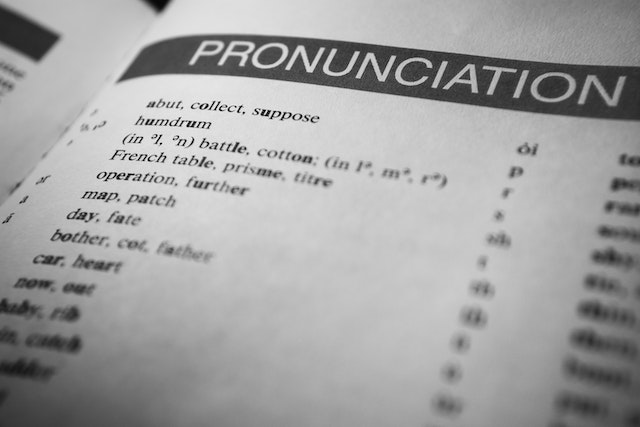Written by: Olivera Tolimir
Let’s do a little test. Translate the following sentences into your language:
- I learn Serbian every day.
- You’ll learn Serbian fluently when you move to Serbia.
Have you used the same verb for the bold parts?
If you have – by all means, keep reading. You need this text more than anything!
If you haven’t – congratulations! Learning Serbian verb aspect will be a piece of cake for you. Even without this cheat sheet!
Before we continue to explain how to learn Serbian verbal aspect, let’s translate the sentences above into Serbian.
- Učim srpski svaki dan.
- Naučićeš srpski tečno kad se preseliš u Srbiju.
As you can see, we used two different verbs in Serbian: učiti and naučiti. Let’s find out why!

What’s an Aspect of a Verb?
Learning Serbian verbal aspect is impossible without knowing the meaning of the term.
The aspect of a verb is a grammatical category that helps us situate verbs in time more precisely than by using tenses only.
Believe it or not, English has a more complex verb aspect system than Serbian! In English, we use four tenses to express the future, four for the present and four for the past.
So, when we look closely into what separates those four present tenses one from the other, it’s the aspect of a verb.
As you can see here, the verb aspect in English depends on whether the verb represents:
- a fact (I learn)
- an ongoing action (I’m learning)
- a completed action (I have learned)
- the end of an ongoing action (I have been learning).
The same division goes for the past and future tenses in English.
What’s important is that the verb aspect in English is determined solely by the tense we use.
In Serbian, the situation is a bit different. We only have one future tense, one present tense, and four past tenses (from which we actively use one and a half).
So, by learning Serbian, you’ll find a different way to distinguish between the verbal aspects.
Learning Serbian: The Verb Aspect
Unlike English, Serbian only has two different verb aspects: perfective and imperfective.
We use the perfective to denote the completed action.
The imperfective verbal aspect in Serbian is used for an uncompleted, ongoing action.
The concept seems simpler than in English. So, what’s the catch?
The catch is that we use different verbs to differentiate the aspect of a verb in Serbian! So, usually, there’s a pair of verbs with the same meaning but other verb aspects.
Well, let’s start with those tricks already!
Memorize the Pairs Together
First, you should try to remember the pairs of verbs when learning the meaning. Like this:
- to learn: učiti (imp.) + naučiti (pf.)
- to cook: kuvati (imp.) + skuvati (pf.)
- to kiss: ljubiti (imp.) + poljubiti (pf.)
- to come: dolaziti (imp.) + doći (pf.)
- to go away: odlaziti (imp.) + otići (pf.)
- to take: uzimati (imp.) + uzeti (pf.)

It’ll seem harder at first to remember two Serbian verbs for one English. But when you start using them, you’ll see it was brilliant doing it this way. You’ll be able to choose one from your memory instead of realizing you can’t use the verb you know in the moment of speaking. That can get frustrating.
Differentiate Aspects in Pairs of Verbs
Maybe you realized we’ve separated the examples in the previous unit into two groups with three verbs each. It’s because there are two different types of these pairs.
- imperfective verb + prefix = perfective verb
- perfective verb + suffix = imperfective verb
Here’s a trick to help you remember these rules (it works in 99% of the cases).
- If the verbs in a pair start differently (there are extra letters at the beginning of the perfective verb (jesti – pojesti)), then the longer word is the perfective verb.
- If the verbs start similarly, with the same letter (dolaziti – doći), the longer word is the imperfective verb.
You’ll run into some exceptions while learning Serbian, but this trick will do it in most situations.
English Can Help You (Sometimes)
Here’s a trick to help you understand the difference between, for example, učiti and naučiti in Serbian.
As you can see in the first paragraph, we translate them both with the verb to learn.
But to feel the difference, look at these sentences:
- Učila sam ceo dan. (I was learning for the whole day.)
- Sve sam naučila za dva sata. (I learned everything in two hours.)
Can you see it?
To emphasize the duration of a process (and its incompleteness), we use the continuing aspect in English. At the same time, we use the imperfective aspect in Serbian.
To emphasize the completeness of the action, we use the simple aspect in English and the perfective aspect in Serbian.
But don’t get too carried away by translating everything to English because sometimes it doesn’t work the same in both languages.
For example, if you’d like to say you’ve been doing something for a while, you should also use the imperfective aspect in Serbian.
- Živim u Srbiji već 20 godina. (I’ve been living in Serbia for 20 years already.)
- Poznajemo se od osnovne škole. (We’ve known each other since elementary school.)
Also, we use the imperfective aspect to express what we’re doing at the moment.
- Pišem tekst za blog. (I’m writing a blog post.)
- Slušam muziku i uživam. (I’m listening to the music and enjoying.)
A crucial rule says: always use the imperfective aspect when using the present tense in a sentence with only one verb.
Don’t Bother Memorizing All at Once

We’ve told you about memorizing pairs of verbs together. But there’s something we didn’t tell you (not wanting to scare you) in the beginning.
Some verbs don’t only have pairs. We can form many perfective verbs from one imperfective.
For example:
- kuvati (to cook)
- skuvati (to finish cooking)
- prokuvati (to boil)
- raskuvati se (to be overcooked)
- …
But don’t worry about this right now. To start, remember the basic pairs (doing : finish doing). Learning Serbian gradually, you’ll grasp new verbs and their new meanings.
Transformers among Us
Here is some good news at the end!
Some Serbian verbs are both perfective and imperfective, depending on the context. So, there’s only one word to remember instead of two.
These verbs include doručkovati (to have breakfast), ručati (to have lunch), večerati (to have dinner), parkirati, telefonirati, and all other foreign verbs ending in –irati.
If you need a cheat sheet for the Serbian verb aspect and perfective and imperfective verb pairs, you can find it on this page.
If you’d like to master always using the correct verb aspect in Serbian, book your first class here! One of our great teachers will help you master the Serbian verbal aspect with ease!



